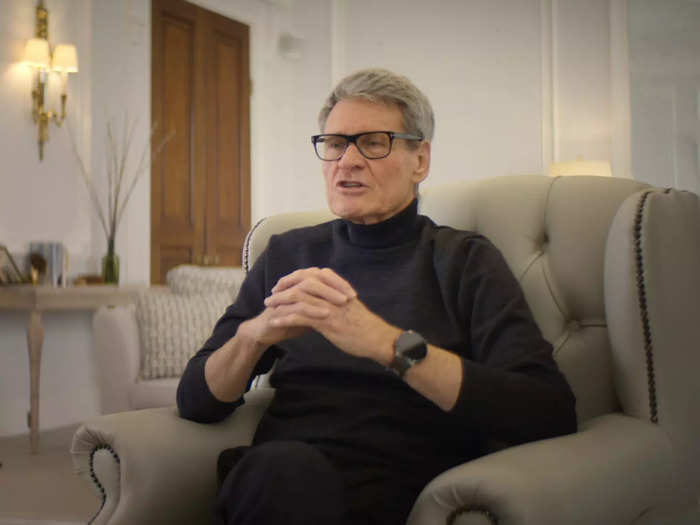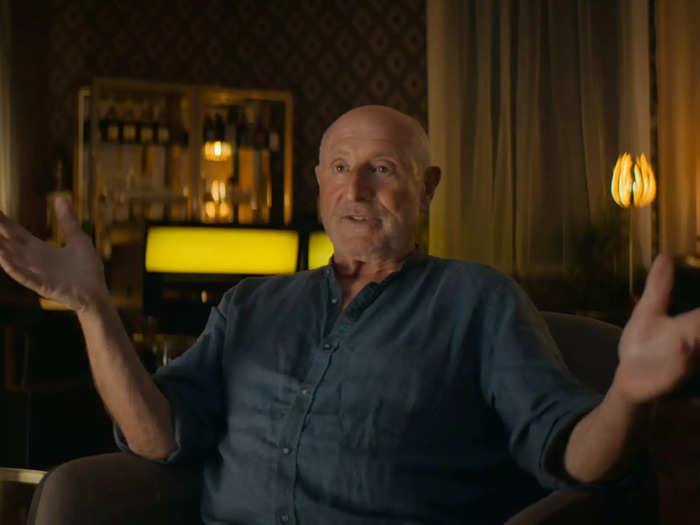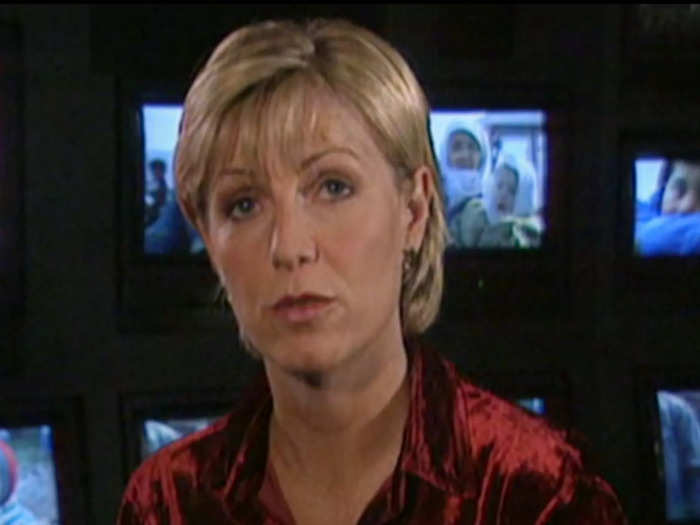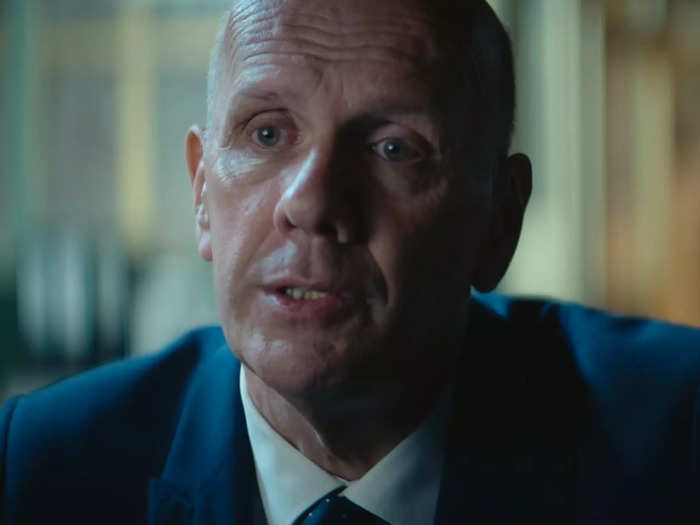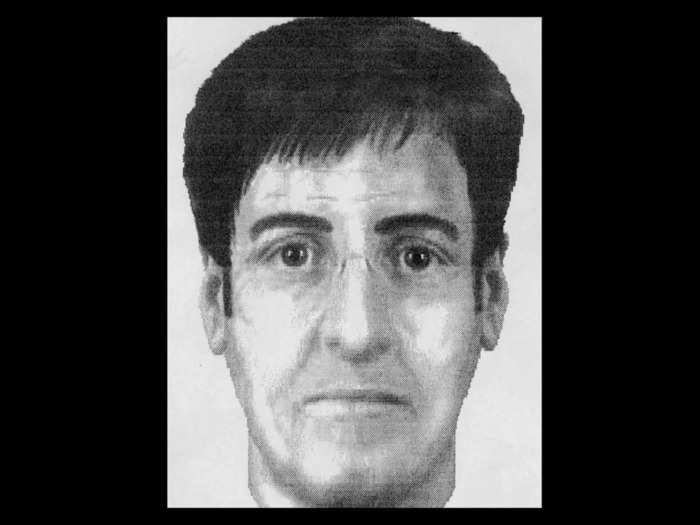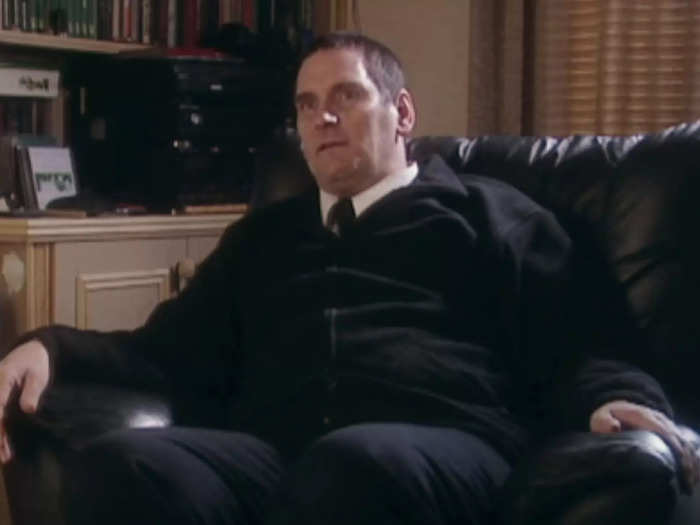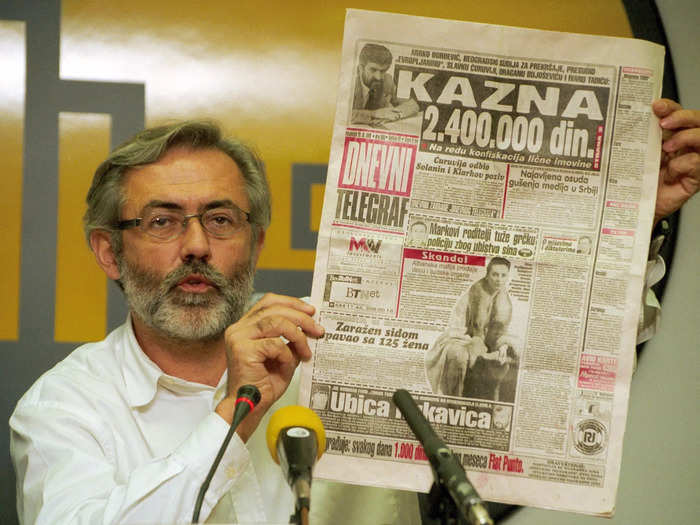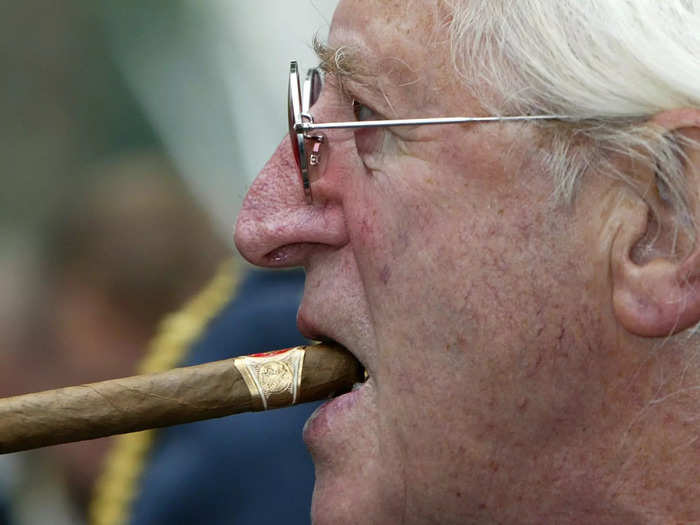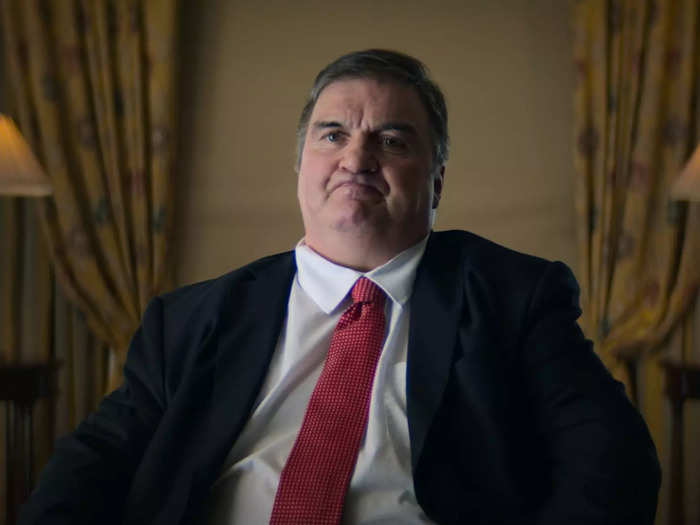English television presenter Jill Dando on UK, 30th October 1996, and archive footage in Netflix's "Who Killed Jill Dando?" showing the e-fit of a suspect.Colin Davey/Getty Images/Netflix
- British TV presenter Jill Dando was assassinated on her doorstep in 1999.
- A new Netflix true-crime docuseries examines the murder of the "Crimewatch" host.
The British public was left shocked when popular television presenter Jill Dando was murdered in front of her home in April 1999.
The 37-year-old journalist was best known for presenting BBC series "Crimewatch" alongside Nick Ross.
Netflix's new true-crime docuseries "Who Killed Jill Dando?" guides viewers through the investigation into her assassination, as detectives who worked on the case give unique insights into the hunt for her killer.
The documentary also touches on Barry George, who was convicted of killing Dando in 2001 and given a life sentence, before being acquitted of the crime in 2008.
Here are the theories presented in the documentary about Dando's death — and the interesting details that the Netflix series doesn't cover.
Theory: Bob Wheaton.
Bob Wheaton in the "Who Killed Jill Dando?" Netflix docuseries. Netflix
As shown in the Netflix docuseries, the police looked into Dando's seven-year relationship with her ex-boyfriend, Bob Wheaton, who was a producer at the BBC, and also her boss.
Although the pair split up before Dando's death, the police discovered that Dando had given Wheaton a loan of £35,000 to help him buy a house.
Because it was a large amount of money, Wheaton was briefly considered a suspect but was ultimately ruled out because the police were happy that the former couple were still on good terms after their breakup.
Theory: Jon Roseman.
Jon Roseman in the "Who Killed Jill Dando?" Netflix docuseries. Netflix
Another theory explored in the documentary is Dando's relationship with her agent, Jon Roseman.
It's explained in the docuseries that the only reason that Dando had returned to her home in Fulham, London, on the morning of her death was because Roseman had faxed her some documents to review. He was interviewed to find out whether this was a ploy so her attacker would be able to find her.
Roseman was later interviewed again because detectives discovered that he'd written a book about an agent whose clients are murdered one by one by a serial killer.
The book was called "Good Men Die Like Dogs," according to the Guardian, and depicts a murder similar to Dando's in which a man is shot in the head at his home. However, all of the killer's victims in the book were male.
Like Wheaton, the police were satisfied that Roseman wasn't a suspect.
A spokesperson for Roseman said that he would never publish his book out of respect for Dando and her family, reported the Guardian in 1999.
Theory: Serbian retaliation.
Archive footage of Jill Dando's appeal for aid during the Yugoslav conflict in the "Who Killed Jill Dando?" Netflix docuseries. Netflix
One of the biggest theories that the authorities looked into was the idea that Dando was killed in retaliation for leading a television appeal in early 1999 for aid for refugees affected by the Kosovo War.
The main theory explored in the Netflix documentary was that Dando's death was in direct response to the NATO bombing of a state TV station in Serbia during the Kosovo conflict. The BBC was contacted several times by people claiming to be involved in her murder.
But during Barry George's trial, the prosecution said that there were three days between the station bombing and Dando's death, which they argued was not enough time to carefully plan out an assassination.
They also pointed out that Serbia never officially took responsibility for Dando's death, and the phone calls made to the BBC were not enough evidence to confirm they were behind the attack.
Theory: A drugs gang.
Former Detective Chief Superintendent Hamish Campbell in the "Who Killed Jill Dando?" Netflix docuseries. Netflix
During the course of the investigation, the police were contacted by a man who identified himself as Mr. James and claimed to know who killed Dando. The man gave authorities the names of several possible suspects.
Police detective Hamish Campbell, who led the investigation, said in the documentary that he personally spoke to Mr. James at length and that he seemed like a plausible informant.
Campbell said that Mr. James told him the people involved were part of a gang that dealt drugs. However, Campbell and his team soon discovered all was not as it seemed, and said that Mr. James was trying to frame other people to cover up his own criminality.
"It became clear he was seeking to blame others for Jill Dando's murder, hoping that they would be arrested to release him from the pressure he was under for his own drugs work," said Campbell.
Theory: Sweating man.
Archive footage showing the e-fit of the sweating man in the "Who Killed Jill Dando?" Netflix docuseries. Netflix
Another theory that's explored in the Netflix series is the sweating man — an individual who was spotted before and after the time of Dando's murder.
Witnesses described him as a white male with short dark hair, and said he was wearing a suit.
Witnesses also said that they'd seen him running on Fulham Palace Road, which is a short distance from Dando's home on Gowan Avenue in Fulham, on the morning of her murder.
The man was reportedly sweating profusely at a bus stop on Fulham Palace Road, and was seen with a mobile phone. The man got on the bus and was last seen at Putney Bridge Underground Station.
Although police released an e-fit of the man, he was never formally identified.
Theory: James Shackleton.
Archive footage of James Shackleton in the "Who Killed Jill Dando?" Netflix docuseries. Netflix
One individual did actually come forward after the e-fit was released — an undertaker named James Shackleton.
Per the documentary, Shackleton came forward because he thought he looked similar to the person in the e-fit, and he was arrested so that the police could interview him further. His home was also searched.
During questioning, according to people interviewed in the documentary, Shackleton said that he was running out of a nearby park because he was being chased by someone. However, in archive footage shown in the docuseries, he also said that he had been running a marathon.
Campbell, the police detective, said that the police found that Shackleton had previously tried to implicate himself in other murder inquiries, and they concluded that he likely had nothing to do with Dando's death,
Missed detail: A Serbian opposition journalist was murdered in a similar way to Dando two weeks before her death.
Slavko Curuvija at a press conference in Belgrade in November 1998. ANDREJ ISAKOVIC/AFP via Getty Images)
Although the police concluded that Dando's appeal for aid during the Kosovo War was not the reason for her death, a Serbian opposition journalist was murdered just two weeks before Dando.
Dnevni Telegraf owner and editor Slavko Ćuruvija was shot 14 times outside of his home in Belgrade after openly criticizing former Serbian president Slobodan Milošević in the publication.
Milan Radonjic, an intelligence agent, and ex-secret police chief Radomir Markovic were among four men who were convicted of orchestrating Ćuruvija's murder.
Missed detail: An unsubstantiated claim suggested Jill Dando was investigating a pedophile ring inside the BBC.
Disgraced British entertainer Jimmy Savile. REUTERS/Paul Hackett/Files
Two years after former BBC radio and television personality Jimmy Savile was first accused of historic sex offenses in 2012, rumors emerged in the British press that Dando had once investigated a pedophile ring inside the BBC, citing an anonymous source. Insider was not able to independently verify these claims.
A BBC spokesperson told the Daily Express at the time: "We've not seen anything that substantiates these claims."
Missed detail: Gangland assassination.
Mark Williams-Thomas attends the ITV Gala at the London Palladium on November 24, 2016, in London, England. Karwai Tang/WireImage
In a 2015 opinion piece for the Daily Mirror newspaper, investigative journalist and former police officer Mark Williams-Thomas posited the theory that Dando's death was the result of a gangland hit because of her work on "Crimewatch."
He wrote: "My theory is that Jill was gunned down on the orders of a London underworld Mr Big to send out a direct, bloody message to others: 'Do not take on organized crime.'"
But in the BBC's own Jill Dando documentary in 2019, Campbell, the detective who investigated the case, dismissed this idea.
"How would it be served by somebody on 'Crimewatch,' some villain or criminal going, 'I know what, I'm so upset with this, I'm going to kill Jill Dando?'" said Campbell. "That made no sense at all. We examined all the cases that Jill was involved in, which cases she broadcast. There was simply no evidence for it."
Missed detail: Barry George sued News Group Newspapers
Barry George in the "Who Killed Jill Dando?" Netflix docuseries. Netflix
A jury found Barry George guilty of Jill Dando's murder in 2001, and it's explained in the Netflix docuseries that a single particle of gunpowder found in his coat pocket was the prosecution's pivotal piece of evidence.
After several failed appeals, George was eventually acquitted of the crime in 2008.
Following George's acquittal, he took legal action against News Group Newspapers, the owner of Britain's The Sun and News of the World newspapers at the time, over articles that suggested he had killed Dando, reported the BBC in December 2009.
NGN ultimately settled with George, paying him an undisclosed amount in damages and covering all of his legal fees.

